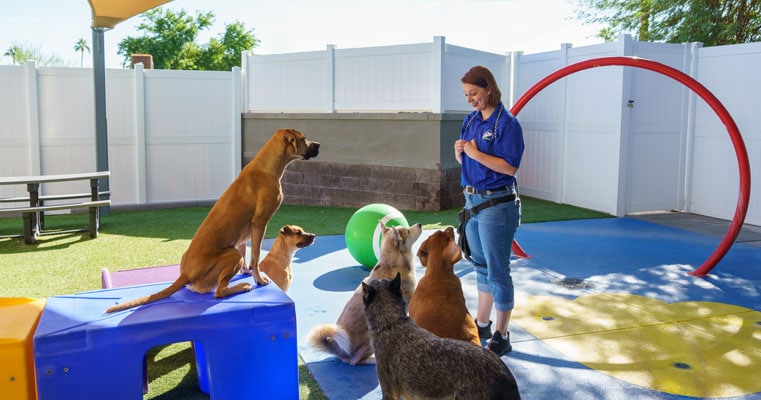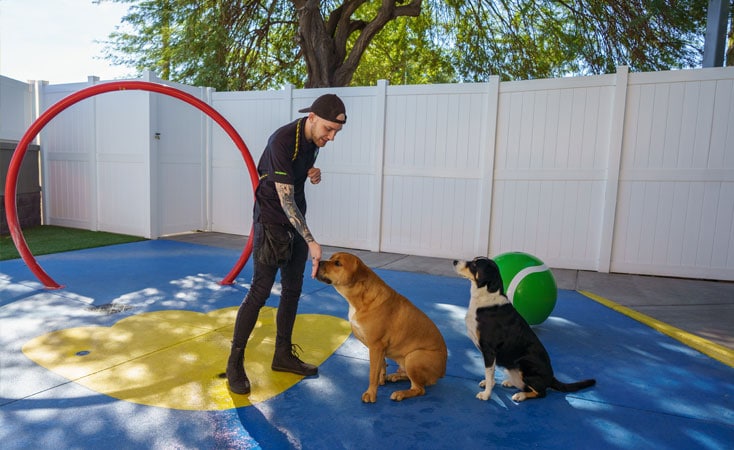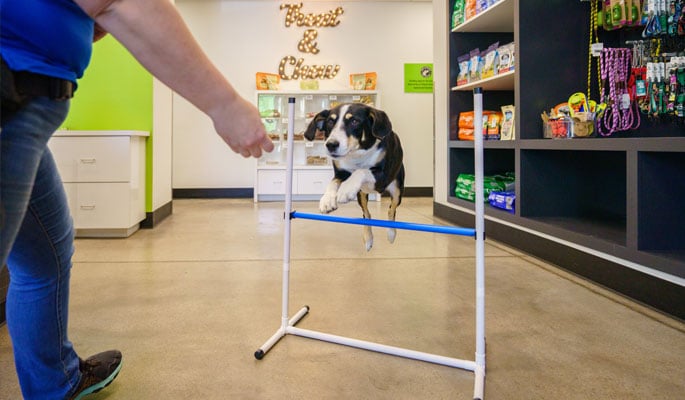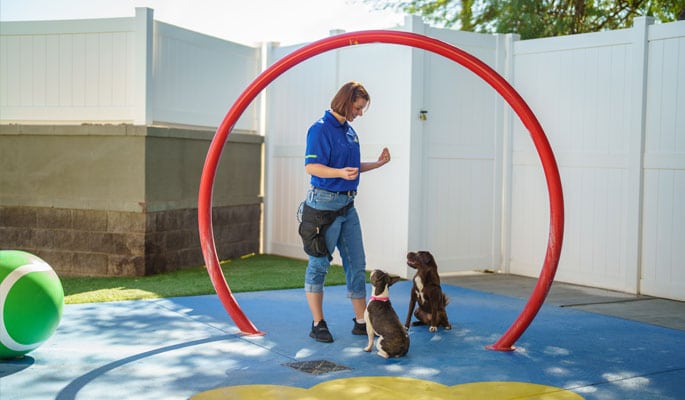Balance Method
Balanced Dog Training refers to any approach to dog training or behavior modification which involves the use of both reward-based techniques and aversive consequences. It can also be described as utilizing the full range of operant conditioning quadrants.
Relationship-Based Management
Another core principle to Paw Common’s training is relationship-based management, or in other words, the bond between the dog and the person. Dogs are pack animals and develop relationships with their human counterparts. Relationships that are built on trust, cooperation and mutual respect produce the most successful outcomes.

Choose The Location Nearest You For More Information
Download Our Reservations App
California Invite Code: 887231
Arizona Invite Code: 667297

The result of utilizing a relationship-based balance method of training creates a well-trained dog and ideally a well-mannered dog. What’s the difference?
- A well-trained dog knows the commands but needs to be told what to do.
- A well-mannered dog anticipates expectations and completes the behavior without prompting.
Most owners do not know how to identify the trigger for a certain dog behavior. This can lead to confusion, misunderstanding of the Balance methodologies, and giving improper attention to the wrong aspect of their dog’s behavior.
As Paw Commons trainers, we clarify the process of communication between owner and canine to develop the desired end results and also educate the owner on continuing the new behaviors. This builds consistency and creates lower thresholds for the client while building a higher sustainable success rate.
We strive for excellence in our training, not perfection. Perfection requires strict, robotic, error-free behavior in a way that’s not realistic or even desirable. Excellence is trying new things, learning as you go, knowing your limitations and planning accordingly. It’s treating clients with decency and appreciation. It’s bringing the best that you can to each moment – while accepting that there may be a few mistakes along the way.
A Brief History of Dog Training
In the 1980’s, dog training saw a major shift in techniques adopted from the fields of exotic and marine mammal training, where the use of force is simply not possible. Dogs were being trained using reward-based techniques to shape and capture desirable behaviors and reinforce them to increase their probability.
However, in the course of this shift in training, many realized that the biggest challenges arose when dealing with problematic behaviors, maintaining consistent responses when rewards aren’t present, and maintaining reliability outside of the classroom and in the real world where various distractions are competing for the dog’s attention.
This methodology continued to develop with significant advancement in the fields of behavioral science and psychology, creating the modern approach to dog training that is both compassionate and reliable. Dogs learn new behaviors by goal driven learning that is enjoyable and effective (treats, play, toys) but also learn consequences with pressures that redirect them back to positive behaviors. Pressures or negative markers are introduced into the training program in a mindful, thought-out manner to ensure that the dog can affect what pressures will be introduced by his or her actions. This builds self-regulation and expectations for social situations, thus creating a well-mannered dog.

Choose The Location Nearest You For More Information
Download Our Reservations App
California Invite Code: 887231
Arizona Invite Code: 667297

Micro Routines or “Lazy Training”
As humans, we have small consistent routines throughout our day. Finding and setting expectations for our dogs’ behavior while we perform these tasks is where the idea of “lazy training” comes in. Discovering the opportunities of lazy training simply takes a little bit of creativity and consistency. For example, you can train your dog to go to his Place every time you unload the dishwasher, which prevents him from licking the clean or dirty dishes. The expectation brings calm and order to your day and helps your dog learn to self-regulate.
Lazy Training finds ways to integrate core training skills into the client’s daily micro routines which builds consistent behaviors in a dog. Those consistent behaviors build into anticipatory or self-regulated manners which help set expectations for other behaviors. All of those build into a well-mannered dog who is confident with social situations and enjoyable to be around.

